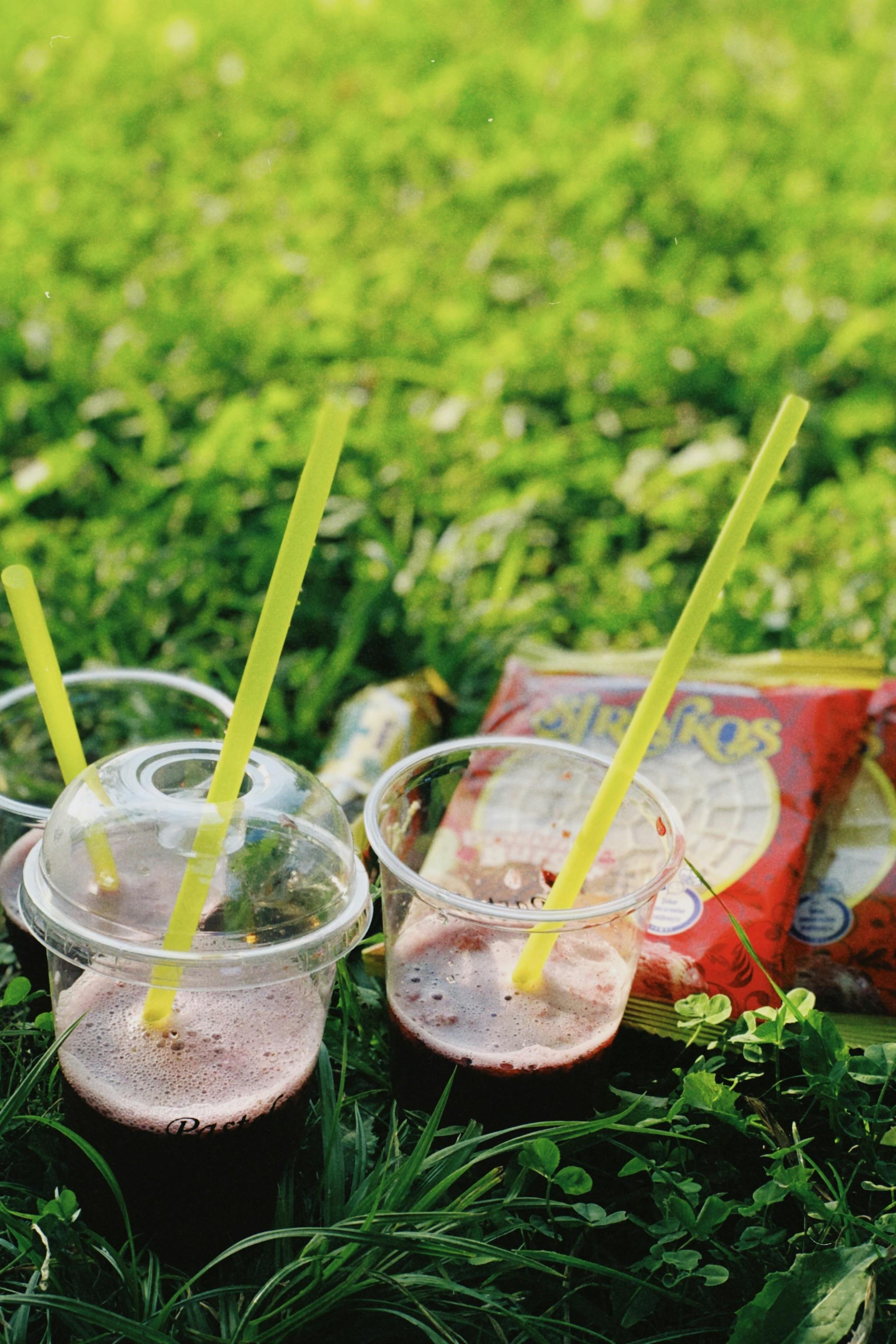So you’ve just finished making a delicious batch of cold brew coffee, but now you’re left wondering what to do with all those used coffee grounds. Can you reuse them to make yet another batch of cold brew, or is it time to bid them farewell? In this article, we explore the possibilities of reusing cold brew coffee grounds and discover whether you can stretch their brewing potential for another round of refreshing goodness. Say goodbye to wastage and hello to new possibilities for your morning cup of joe!
1. What is Cold Brew Coffee?
Cold brew coffee is a popular coffee preparation method that involves steeping coarsely ground coffee in cold or room temperature water for an extended period of time, typically ranging from 12 to 24 hours. Unlike traditional coffee brewing methods that rely on hot water for extraction, cold brew coffee is made by slowly extracting the flavors from the coffee grounds through prolonged steeping.
1.1 Cold Brew Coffee Process
The cold brew coffee process consists of a few simple steps. First, coarsely ground coffee is combined with cold or room temperature water in a container or pitcher. The coffee and water are then mixed together to ensure even extraction. The mixture is left to steep for an extended period of time, usually overnight, allowing the flavors to infuse into the water. After steeping, the coffee grounds are typically filtered out, and the resulting cold brew coffee concentrate can be diluted with water or milk according to personal preference.
1.2 Flavor Profile of Cold Brew Coffee
Cold brew coffee offers a distinct flavor profile compared to traditional hot brewed coffee. The slow extraction process creates a smoother, less acidic cup of coffee with a full-bodied and subtly sweet taste. The lower acidity of cold brew makes it a popular choice for individuals with sensitive stomachs or acid reflux. The flavor notes in cold brew coffee can vary depending on the origin and roast level of the coffee beans used, but common descriptors include notes of chocolate, caramel, and nuttiness.
2. Importance of Proper Coffee Ground Extraction
The extraction process is crucial in determining the flavor and quality of the coffee. Proper extraction ensures that the desired flavors are extracted from the coffee grounds without any unwanted bitterness or sourness.
2.1 Factors Affecting Coffee Extraction
Several factors influence coffee extraction, including grind size, water temperature, brewing time, and coffee-to-water ratio. Each of these factors can be adjusted to achieve the desired flavor profile, strength, and extraction level.
2.2 Extraction in Cold Brew Coffee
Cold brew coffee extraction differs from hot brewing methods due to the absence of heat. Cold water extracts flavors more slowly compared to hot water, resulting in a different chemical breakdown of the coffee compounds. The lower temperature and longer brewing time in cold brew allow for a more gentle and gradual extraction, resulting in a smoother and less acidic taste profile.
2.3 Optimal Extraction for Flavor
To achieve optimal extraction in cold brew coffee, it is important to use a coarser grind size compared to hot brewing methods. The larger surface area of coarsely ground coffee allows for a more even and controlled extraction. Additionally, the coffee-to-water ratio and brewing time should be adjusted to balance the flavors and strength of the cold brew. Experimenting with different variables can help personalize the flavor and achieve the desired extraction level.

3. Reusing Cold Brew Coffee Grounds
Reusing cold brew coffee grounds is a common practice among coffee enthusiasts who want to reduce waste and maximize the use of their coffee grounds. While the flavor of reused grounds may be slightly diminished compared to the first extraction, there are still ways to enjoy a second batch of cold brew or repurpose the grounds for other uses.
3.1 Brewing a Second Batch of Cold Brew
To reuse cold brew coffee grounds for a second batch, simply add fresh water to the used grounds and let them steep for another 12 to 24 hours. The resulting cold brew may have a milder flavor compared to the first batch, but it can still be enjoyable. Adjusting the brewing parameters, such as using a longer steeping time or a higher coffee-to-water ratio, can help enhance the flavor of the second batch.
3.2 Other Ways to Reuse Cold Brew Coffee Grounds
Aside from brewing a second batch of cold brew, there are other creative ways to utilize reused coffee grounds. For example, they can be used as an ingredient in baking recipes or added to smoothies for a hint of coffee flavor. Coffee grounds can also be used as a natural scrub for exfoliating the skin or as a fertilizer for plants. These alternative uses provide an opportunity to repurpose coffee grounds and reduce waste.
4. Factors to Consider Before Reusing
Before reusing cold brew coffee grounds, it is important to consider certain factors that may impact the quality, health risks, and flavor of the second brew.
4.1 Quality of Reused Cold Brew
The quality of the second batch of cold brew may be slightly inferior to the first batch due to the initial extraction of flavors. While the reused grounds can still impart some flavor, it is important to manage expectations and understand that the taste may be milder. However, experimenting with brewing parameters and adjusting the coffee-to-water ratio can help enhance the flavor of the second batch.
4.2 Potential Health Risks
Reusing coffee grounds for a second batch of cold brew does not pose any significant health risks, as long as proper storage and hygiene practices are followed. It is important to store the used grounds in an airtight container in the refrigerator to prevent the growth of mold or bacteria. Additionally, ensuring that the coffee equipment used is clean and free from any contaminants is crucial for maintaining food safety.
4.3 Flavor Impact on Second Brew
The flavor of the second batch of cold brew will be influenced by the initial extraction of flavors in the first batch. While the flavor may be less robust, it can still offer a pleasant drinking experience. The extent of flavor impact will depend on various factors, such as the strength of the initial extraction, the brewing parameters used for the second batch, and personal taste preferences.

5. Tips for Reusing Cold Brew Coffee Grounds
To make the most of reused cold brew coffee grounds, here are some tips to consider:
5.1 Storing Used Coffee Grounds
Properly storing used coffee grounds is essential to maintain their freshness and prevent any spoilage. Transfer the used grounds into an airtight container and store it in the refrigerator. This helps to preserve the flavors and prevent the growth of mold or bacteria.
5.2 Adjusting Brewing Parameters
When reusing coffee grounds, it may be necessary to adjust the brewing parameters to achieve the desired flavor and strength. Experiment with different coffee-to-water ratios, brewing times, and temperature to enhance the taste of the second batch. Keep in mind that the flavor of the second brew may be milder compared to the first batch.
5.3 Experimenting with Ratios and Brew Times
Don’t be afraid to experiment with different ratios and brew times when reusing cold brew coffee grounds. By adjusting these variables, you can customize the flavor and strength of the second brew to better suit your preferences. Consider extending the steeping time or increasing the amount of coffee grounds for a bolder flavor.
6. Alternative Uses for Cold Brew Coffee Grounds
Apart from reusing coffee grounds for a second batch of cold brew, there are various alternative uses that contribute to sustainability and reduce waste.
6.1 Composting
Coffee grounds can be a valuable addition to a compost pile due to their organic matter content. The grounds provide nitrogen to the compost, promoting healthy microbial activity and aiding in the breakdown of other compostable materials. Remember to mix the coffee grounds with other compostable materials and maintain a proper balance of carbon and nitrogen for effective composting.
6.2 Soil Fertilizer
Coffee grounds contain nutrients such as nitrogen, potassium, and phosphorus, making them a beneficial fertilizer for certain plants. Sprinkling coffee grounds around acid-loving plants like azaleas, rhododendrons, and blueberries can help provide soil acidity and organic matter. However, it is important to avoid using excessive amounts of coffee grounds, as it can lead to imbalances in the soil pH.
6.3 Body Scrub or Exfoliant
Coffee grounds can also be repurposed into a natural body scrub or exfoliating treatment. When combined with a carrier oil like coconut oil or olive oil, the grounds create a gritty texture that helps remove dead skin cells and promote smoother skin. This DIY scrub can be used in the shower or as a gentle facial exfoliant.

7. Sustainability and Environmental Impact
Reusing cold brew coffee grounds, along with exploring alternative uses, contributes to sustainability efforts and reduces coffee waste.
7.1 Reducing Coffee Waste
Coffee grounds are one of the most significant sources of waste in the coffee industry. By reusing coffee grounds for a second batch of cold brew or repurposing them in other ways, individuals can play a part in reducing this waste and minimizing their environmental footprint.
7.2 Ecological Benefits of Repurposing Grounds
Repurposing coffee grounds offers ecological benefits beyond waste reduction. Using coffee grounds as compost or soil fertilizer enriches the soil, promotes plant growth, and reduces the need for synthetic fertilizers. Additionally, repurposing coffee grounds in personal care products contributes to minimizing the use of harsh chemicals found in some commercial products.
8. Expert Opinions and Recommendations
Coffee experts share their views and provide recommendations on reusing cold brew coffee grounds:
8.1 Coffee Experts’ Views on Reusing Grounds
Many coffee experts encourage the reuse of coffee grounds for a second batch of cold brew or alternative uses. They emphasize the importance of adjusting brewing parameters and managing expectations to maximize flavor and minimize waste. Some experts also suggest using the second brew as a base for coffee cocktails or incorporating it into recipes that require a milder coffee flavor.
8.2 Recommended Methods for Reusing
Experts recommend experimenting with different brewing parameters, such as adjusting the coffee-to-water ratio and extending the steeping time, to enhance the flavor of reused grounds. They also highlight the benefits of composting coffee grounds to enrich soil and reduce waste. Additionally, experts suggest using coffee grounds as a natural exfoliant for skincare purposes.
9. Frequently Asked Questions (FAQs)
9.1 Can you reuse cold brew coffee grounds for hot coffee?
While it is possible to reuse cold brew coffee grounds for hot coffee, the flavor profile may be different compared to hot brewed coffee grounds. Cold brew coffee tends to have a smoother and less acidic taste, which may not translate well into a hot brew. However, experimenting with brewing parameters and personal preferences can lead to enjoyable results.
9.2 How many times can you reuse cold brew coffee grounds?
The number of times cold brew coffee grounds can be reused depends on various factors, such as the initial extraction, storage conditions, and personal taste preferences. Typically, coffee grounds can be reused for a second batch of cold brew, but the flavor may gradually diminish with each subsequent reuse.
9.3 Are there any risks associated with reusing cold brew coffee grounds?
Reusing cold brew coffee grounds does not pose any significant health risks as long as proper storage and hygiene practices are followed. It is important to store the used grounds in an airtight container in the refrigerator and maintain clean coffee equipment to ensure food safety. However, individuals with specific health concerns or sensitivities should consult with a healthcare professional before reusing coffee grounds.
10. Conclusion
Reusing cold brew coffee grounds offers a sustainable way to minimize waste and explore new flavors. While the flavor of reused grounds may be milder compared to the first extraction, they can still be repurposed for a second batch of cold brew or utilized in other creative ways. By adjusting brewing parameters and embracing alternative uses, coffee enthusiasts can contribute to sustainability efforts while enjoying the unique flavors that cold brew coffee has to offer.
